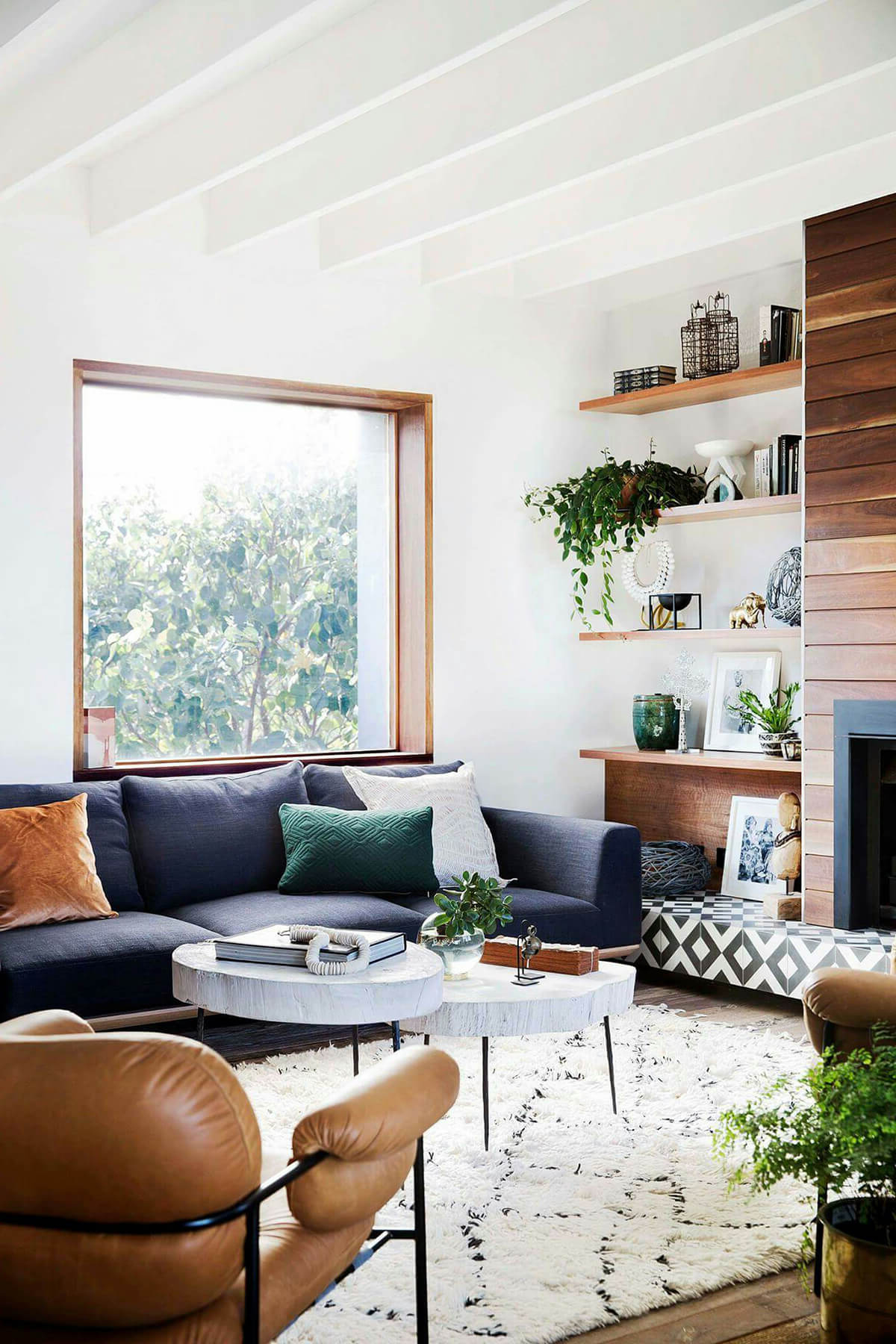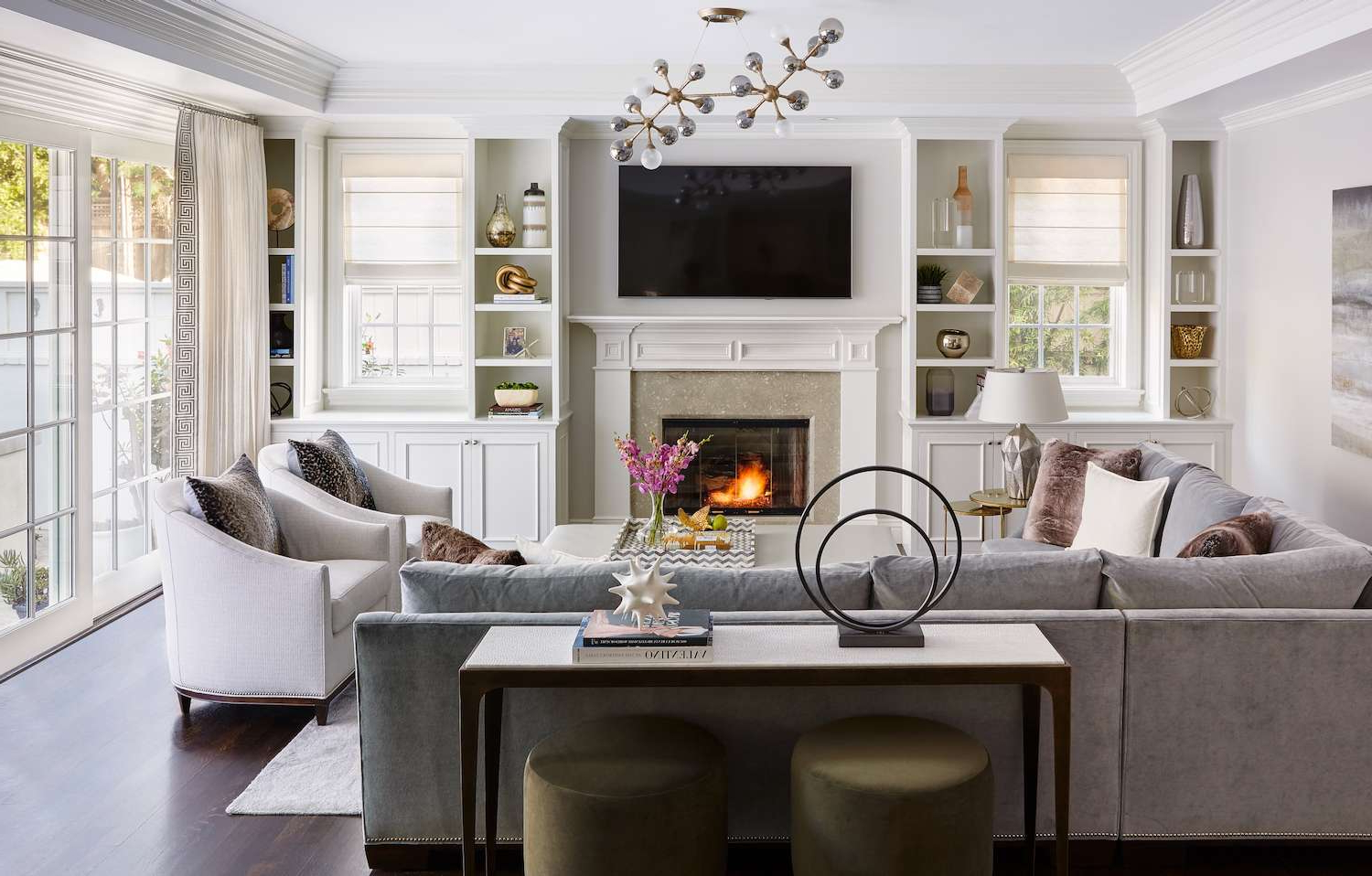Think about the last time you sat down in a truly comfortable space. Maybe it was your favorite chair at home, or perhaps a cozy corner where you could curl up with a good book. Now imagine that same feeling, but amplified across an entire room. That’s what happens when you master the art of combining comfort and style in your living room layout. It’s not just about making things look pretty – it’s about creating a space that feels like a true sanctuary.
We’ve all been there. You walk into a living room and immediately feel something is off. Maybe everything looks too formal, or maybe it feels too chaotic. Sometimes we try to make our living rooms look like magazine spreads, but forget that the most important part is how they feel when you’re actually sitting in them. The truth is, a room that’s beautiful but uncomfortable will never truly work for you. The real magic happens when you blend aesthetics with function in a way that makes everyone feel at ease. Whether you’re furnishing a brand new space or refreshing an existing one, understanding how to balance comfort and style is essential. It’s not about choosing one over the other – it’s about finding that sweet spot where both elements complement each other perfectly.
Understanding the Foundation of Comfort
Before we dive into styling, let’s talk about what really makes a space feel comfortable. It’s not just about soft textures or warm lighting – though those definitely help. True comfort comes from knowing that every element in the room serves a purpose and contributes to your wellbeing. Start with your seating arrangement. Think about how people will move around the space and where they’ll naturally gather. A comfortable living room usually has a central focal point – whether that’s a fireplace, a large window, or even a stunning piece of artwork. This creates a natural gathering place. Consider the flow of traffic too. You don’t want to have furniture blocking pathways or forcing people to navigate around awkwardly. When you think about comfort, remember that it’s deeply personal. What feels cozy to one person might not work for another. The key is to build your foundation around your lifestyle and habits. For instance, if you love reading, make sure you have a comfortable chair and good lighting nearby. If you frequently host guests, ensure you have enough seating and that it’s arranged in a way that encourages conversation.
Choosing the Right Furniture Pieces
Furniture selection is where comfort and style often meet. You want pieces that are both visually appealing and functional. Start by measuring your space carefully before buying anything. A room that feels cramped because of oversized furniture will never feel comfortable, no matter how stylish it looks. Think about scale and proportion. Large, bold pieces can dominate a small space and make it feel overwhelming, while smaller furniture in a large room might get lost. The goal is harmony. Choose pieces that have a consistent aesthetic but vary in size and shape to keep things interesting. For example, a sleek, modern sofa paired with a rustic coffee table can create a great contrast. Don’t forget about texture. Mixing materials like wood, metal, velvet, and linen adds depth to your design and makes the space feel more inviting. Consider the practical aspects too – does the furniture fit your daily routine? Will it hold up to wear and tear? If you have kids or pets, you might want to choose materials that are easy to clean or resistant to damage. Quality matters here. Invest in pieces that will last and provide comfort for years to come. Remember, it’s better to have fewer high-quality items than many cheap ones that will need replacing quickly.
Lighting That Sets the Mood
Lighting is one of the most powerful tools in your design arsenal, and it’s often overlooked. The right lighting can transform a room from merely functional to truly magical. Start with layers of light – ambient, task, and accent lighting. Ambient lighting provides overall illumination, like overhead fixtures or ceiling lights. Task lighting helps with specific activities, such as reading or working, and should be adjustable. Accent lighting highlights features in the room, like artwork or architectural details. Natural light is your best friend, so maximize what you have. Position furniture to take advantage of windows and consider using sheer curtains that let light in while maintaining privacy. When artificial lighting is necessary, go for warm tones rather than harsh white light. Soft, warm light creates a more welcoming atmosphere. Consider dimmer switches for greater control. They allow you to adjust the mood throughout the day. For example, bright light during the morning can help you start your day, while softer lighting in the evening promotes relaxation. Table lamps, floor lamps, and string lights can all contribute to the ambiance. Don’t be afraid to layer different types of lighting. A combination of overhead light, a floor lamp, and some table lamps can create a cozy environment that’s perfect for unwinding after a long day.
Color Psychology and Visual Harmony
Colors play a huge role in how a room feels and functions. Understanding color psychology can help you make choices that support your desired mood and lifestyle. Neutral colors like beige, cream, and soft grays create a calm backdrop that allows other elements to stand out. They’re also incredibly versatile and timeless. Warm colors like reds, oranges, and yellows can make a space feel energetic and inviting. Cool colors like blues and greens tend to create a sense of tranquility and can make a room feel larger. But remember, it’s not just about individual colors – it’s about how they work together. Create visual harmony by establishing a color palette with 3-5 main colors and using variations of those hues throughout the space. You can use the 60-30-10 rule: 60% dominant color, 30% secondary color, and 10% accent color. This creates a balanced and cohesive look. Don’t be afraid to add pops of color through accessories like throw pillows, artwork, or plants. These can easily change the vibe of a room without requiring major renovations. Also consider the undertones of colors. A blue with warm undertones can make a space feel cozy, while a cool-toned blue might make it feel more spacious. Testing paint samples on actual walls is always a good idea before committing to a color scheme.
Accessorizing Without Overdoing It
Accessories are where you can really show your personality and bring life to a space. But it’s easy to go overboard and end up with a cluttered look. The secret is in restraint and intentionality. Choose 2-3 statement pieces that really speak to you and build around those. Think about what you want to communicate about yourself through your space. Are you looking for a relaxed vibe, or do you prefer something more formal? Let that guide your accessory choices. Plants are excellent additions – they bring life, improve air quality, and require minimal maintenance. Start with low-maintenance options like snake plants or pothos if you’re new to plant care. Artwork and books can also add character without overwhelming the space. Hang artwork at eye level and arrange books neatly on shelves. Mirrors are fantastic for reflecting light and making spaces feel larger. Just make sure they’re proportionate to the wall they’re hanging on. Textiles like throw blankets, cushions, and rugs are wonderful for adding comfort and texture. They’re also easy to swap out if your taste changes. Remember that less is often more when it comes to accessorizing. A few well-chosen pieces can make a bigger impact than many mediocre ones. Always step back and evaluate whether each item enhances or detracts from the overall look.
Creating Flow and Functionality
A successful living room layout needs to work for both social interaction and quiet moments. This means designing with multiple zones in mind. You might have a conversation area, a reading nook, and perhaps a space for entertainment. Each zone should serve a different purpose while still feeling connected to the whole room. Consider how people will move through the space. Clear pathways are essential for comfort and safety. Make sure there’s at least 36 inches of clearance around furniture for easy navigation. The arrangement should encourage conversation – seating should face each other rather than all pointing toward a single focal point. Think about how the room will be used throughout the day. A family room might need more casual seating arrangements, while a formal living room might benefit from more structured layouts. Consider the technology needs too. Where will you put your TV? How will you manage cords? Will you need dedicated spaces for gaming or working? These practical considerations affect the overall flow of the room. The final result should feel intentional and effortless. It should be a space where you naturally want to spend time, whether that’s chatting with friends, relaxing alone, or entertaining guests.
Final Thoughts on Balance
Designing a living room that balances comfort and style isn’t about following rigid rules – it’s about creating a space that reflects who you are and how you live. The key is to approach it with thoughtfulness and attention to detail. Start with the basics: comfort first, then layer in style. Use furniture that serves a purpose, lighting that enhances the mood, and accessories that tell your story. Remember that the best designs are those that evolve with you over time. What works now might need adjustments later as your needs change. Don’t be afraid to experiment and make mistakes – they often lead to the most interesting results. Trust your instincts, measure twice, and buy once. Most importantly, enjoy the process. A well-designed living room should make you feel good every time you enter it. It should be a place where you can truly relax, connect with others, and express yourself. That’s the ultimate goal of any successful living room layout.
Creating a living room that successfully combines comfort and style is both an art and a science. It requires thoughtful planning, an understanding of your lifestyle, and a willingness to experiment. From choosing the right furniture and lighting to selecting the perfect colors and accessories, every decision contributes to the overall feeling of the space. The most important thing to remember is that your living room should be a reflection of you – a place where you feel comfortable being yourself while also looking great. Whether you’re starting from scratch or updating an existing space, focus on the fundamentals first. Build a solid foundation of comfort, then layer in style elements that resonate with your personal taste. Don’t rush the process, and don’t be afraid to make adjustments along the way. The goal isn’t perfection – it’s creating a space that feels authentically yours. With patience and attention to detail, you’ll end up with a living room that not only looks beautiful but also serves your needs perfectly. That’s what transforms a house into a home.















